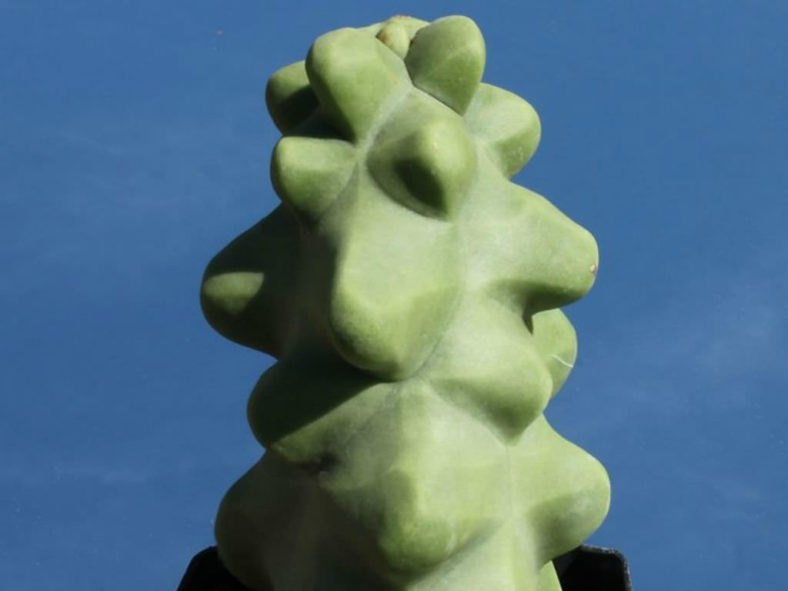Scientific Name
Pachycereus schottii f. monstrosus (H.E.Gates) P.V.Heath
Accepted Scientific Name
Pachycereus schottii (Engelm.) D.R.Hunt
Common Name(s)
Monstrous Whisker Cactus, Totem Cactus, Totem Pole, Totem Pole Cactus
Synonym(s)
Lophocereus schottii f. monstrosus
Scientific Classification
Family: Cactaceae
Subfamily: Cactoideae
Tribe: Pachycereeae
Genus: Pachycereus
Description
Pachycereus schottii f. monstrosus, formerly known as Lophocereus schottii f. monstrosus, is an odd, spineless cactus with knobby, dark green columnar stems with a waxy coating. It is slow-growing, usually trunkless, and can reach 20 feet (6 m) in height, usually branching at the base. The stems have 5 to 9 irregular ribs and unusual, tubercle-like swellings. Rarely, they may spiral left or right.
Unlike the normal form, areoles are few and insignificant, rarely developing pink flowers in summer. The edible fruits are candy apple red, when immature greenish, and contain red pulp and blackish seeds.
Origin
Pachycereus schottii f. monstrosus is a monstrose form of Pachycereus schottii.

Hardiness
USDA hardiness zone 9a to 10a: from 20 °F (−6.7 °C) to 35 °F (+1.7 °C).
How to Grow and Care
These extraordinarily low-maintenance plants can grow untouched for decades, so there's not much you need to worry about. However, it's very important that they receive adequate sun and heat and be careful around their spines. If grown in containers, ensure they're being repotted, and their soil isn't too moist. Other than that, these plants are about as simple and hands-off as it gets.
Inapplicable to most scenarios in which Pachycereus would be grown. If you do choose to cultivate a small specimen of Pachycereus pringlei in a container, repotting it can be helpful: if so, repot it as you would any other cactus by removing it from the pot, cutting away any dead material from the roots, and replanting.
See more at How to Grow and Care for Pachycereus.
Links
- Back to genus Pachycereus
- Succupedia: Browse succulents by Scientific Name, Common Name, Genus, Family, USDA Hardiness Zone, Origin, or cacti by Genus
Photo Gallery
Click on a photo to see a larger version.



